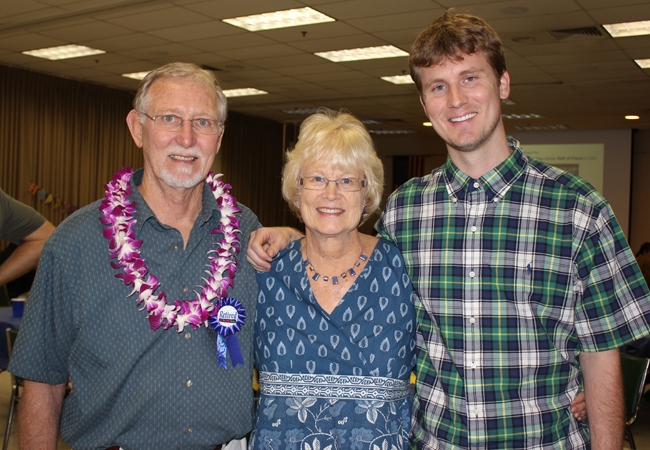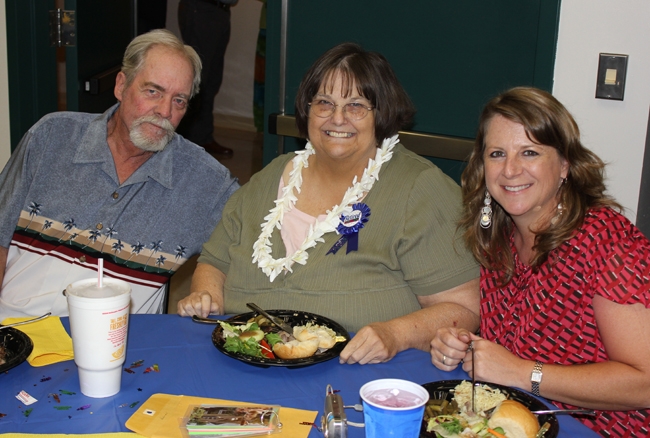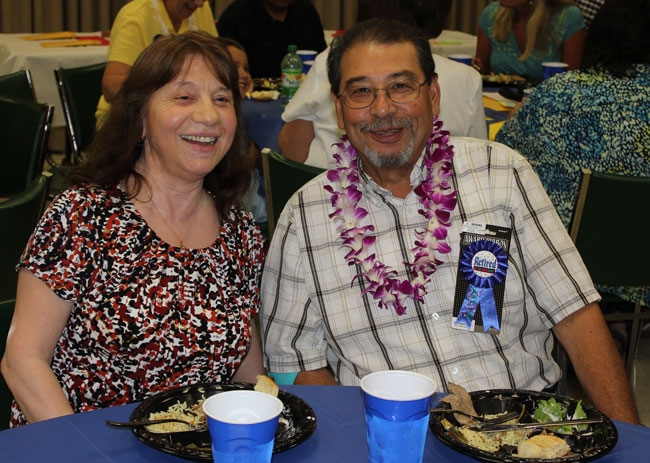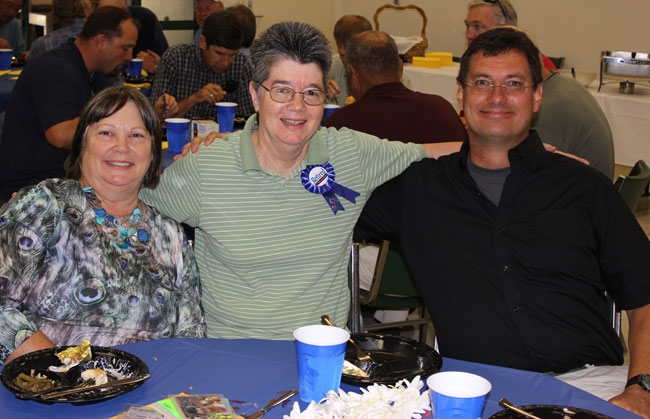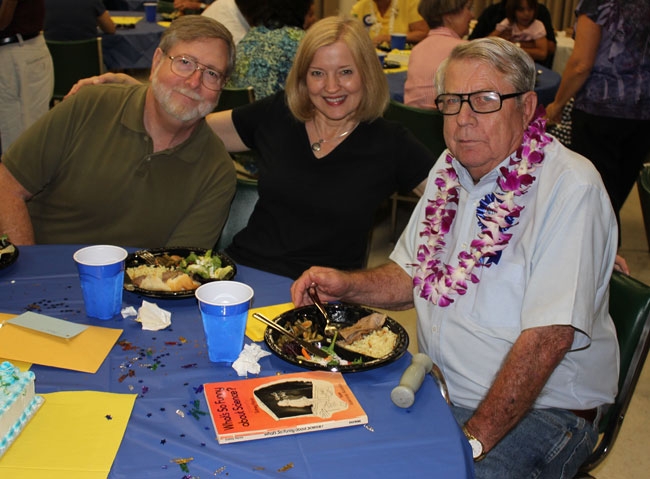- Author: Jeannette E. Warnert
Larry Schwankl, UC Cooperative Extension irrigation specialist in the Department of Land, Air and Water Resources at UC Davis, based at the UC Kearney Agricultural Research and Extension Center in Parlier, retired at the end of June after 28 years of service to UC Cooperative Extension.
Schwankl's research emphasis was in drip, sprinkler, and flood irrigation. He worked on irrigation system maintenance and chemigation, irrigation scheduling using soil moisture monitoring and evapotranspiration techniques.
For information about academic positions now under recruitment, see the employment opportunities page of the UC Division of Agriculture and Natural Resources website, http://ucanr.edu/Jobs/Jobs_990/.
For 100 years, the University of California Cooperative Extension researchers and educators have been drawing on local expertise to conduct agricultural, environmental, economic, youth development and nutrition research that helps California thrive. UC Cooperative Extension is part of the University of California Division of Agriculture and Natural Resources. Learn more at ucanr.edu.

- Author: Jeannette E. Warnert
When the University of California decided to provide geospatial support to its scientists at the UC Kearney Agricultural Research and Extension Center in 2000, they tapped Kris Lynn-Patterson, an experienced teacher and information systems technologist, to lay the groundwork. Geographic information systems academic coordinator Lynn-Patterson retired in June.
Lynn-Patterson earned bachelor’s and master’s degrees in geography/climatology at Fresno State University and taught weather, climate landforms and global information systems classes there as a full-time lecturer for five years and part-time at State Center Community College for 10 years.
In 1990, while still teaching part time, she took a new position as a climatologist with a crop insurance firm.
“We were embarking on a brand-new initiative in the crop insurance business using remote sensing and spatial imagery to appraise losses from weather events,” Lynn-Patterson said.
In 2000, she again broke ground by introducing geospatial technologies to agricultural research at Kearney. Geospatial technologies now allow scientists to take a broader view of landscapes than is possible from the field level.
For example, Lynn-Patterson worked with Pete Goodell, UC Cooperative Extension advisor with the Statewide Integrated Pest Management Program, to understand the migration of lygus bugs through the San Joaquin Valley’s mosaic of diverse crops. In the spring, lygus can reproduce in lush vegetation on foothills surrounding the San Joaquin Valley. As the plants dry when the weather warms and rain stops, the lygus begin looking for a new home in valley agriculture, including cotton, which suffers severe economic losses from lygus.
By combining observations made on the ground with GIS mapping technology, Goodell was able to determine the areas in the San Joaquin Valley where cotton is most likely to have lygus problems in mid-summer. Where alfalfa is scarce, cotton fields absorb the migrating bugs. But where alfalfa is close to cotton fields, the alfalfa acts as a lygus sponge and spares cotton most of the damage.
Recently, Lynn-Patterson and her staff, in collaboration with the Citrus Pest and Disease Prevention Program, have been engaged in mapping cropping patterns in the Central Valley citrus belt. This geographic database will provide information needed to ensure quick action when Asian citrus psyllids or huanglongbing disease is found.
Last year, the Kearney GIS program became part of a larger UC Agriculture and Natural Resources statewide program called Informatics and Geographic Information Systems. IGIS is organizing and preparing data pertaining to agriculture and natural ecosystems statewide and making the information accessible on the web.
Lynn-Patterson has a full retirement planned. She is establishing a non-profit animal rescue organization, “Four Feet Inn,” that will connect homeless dogs, horses and other animals with foster families.
“My goal is to find a path to get animals off the street and into no-kill shelters,” Lynn-Patterson said. “I love animals and I love people who want to help animals, so facilitating this connection is what my spirit wants to do.”
Lynn-Patterson is also pursuing a writing career. She has already completed the first novel in a trilogy and begun work on the second. Both of these hobbies she plans to combine via the Internet with travels around the United States and Canada in a motor home.

- Author: Jeannette E. Warnert
After a successful tenure as an entomology professor and researcher at the University of Hawaii, Manoa, Marshall W. Johnson added a 10-year capstone to his career as UC Cooperative Extension specialist and research entomologist in the Department of Entomology at UC Riverside, based at the UC Kearney Agricultural Research and Extension Center. He retired at the end of June.
Johnson traces his interest in insects to a visit with a family friend on the outskirts of his hometown, Roanake, Va., when he was 10 years old. He was intrigued by a copy of “A Golden Guide to Familiar American Insects,” and the friend gave it to him. “That’s how I got started,” Johnson said. He never looked back.
Johnson earned bachelor’s and master’s degrees in entomology at North Carolina State University and in 1974 completed a Ph.D. in entomology at UC Riverside. After conducting short stints of entomological research at two locations on the mainland, he moved to Hawaii in 1983 to serve as a professor and focus his research on biological control.
In Hawaii watermelon production, Johnson was able to help farmers reduce pesticide use by 90 percent by showing that pesticide applications were killing natural enemies of a Liriomyza leafminer pest they were trying to control. He also worked on biological control of pests on cucumbers, tomatoes, green onions, pineapple, papaya and coffee.
In 1995, Johnson took a six-month sabbatical leave to UC Davis and realized how much he missed living on the mainland. He started looking for a new job and eventually was offered the combined extension and research position at his alma mater, UC Riverside, based at the off-campus research center in Parlier, Calif.
Johnson’s arrival coincided with the introduction of olive fruit fly in California, a serious pest that has devastated olive production in the Mediterranean region for more than 2,000 years. Olive fruit fly was detected in Los Angeles in 1998, and by 1999 had made its way into the San Joaquin Valley, the leading producer of the state’s olives.
To the great relief of valley olive growers, Johnson and his biological control colleague Kent Daane, UCCE specialist in the Department of Environmental Science, Policy and Management at UC Berkeley, found that hot summertime temperatures in the valley depress olive fly populations. But that didn’t provide a statewide solution.
Johnson and Daane worked together to introduce exotic natural enemies of the pest from Africa. The beneficial insects have been released from quarantine and introduced at several locations in California, with recovery of one species in the San Luis Obispo and Redwood City areas.
“We think it’s on the way to establishment. That’s a good sign,” Johnson said. “Now we're waiting to see if the parasite’s presence will have an impact on olive fly populations.”
Johnson was also involved in research that showed the Central Valley isn’t as hospitable to glassy-winged sharpshooters as other parts of the state. When it gets very cold, GWSS cannot move or feed. They either starve or get dehydrated.
“About every 2 out of 10 years, it gets cold enough in the valley that glassy-winged sharpshooter populations are reduced 90 to 95 percent,” Johnson said. “It is unlikely glassy-winged sharpshooters would ever become well established in the Sacramento Valley or the northern San Joaquin Valley. But it is well established in the Bakersfield area.”
Johnson ended his career with a video production project designed to raise awareness about integrated pest management. Posted on the website Extending Orchard IPM Knowledge in California, the videos include interviews with IPM practitioners, researchers and farmers plus overviews of specific pest control techniques, such as biological control, cultural practices and pheromones.
For his research and extension efforts, Johnson received numerous awards and honors over the years. Most recently, he was named “Distinguished Scientist of the Year,” by the International Organization for Biological Control. He is an elected fellow of both the Entomological Society of America and the American Association for the Advancement of Science. He was author or co-author of more than 200 peer-reviewed articles, book chapters, and extension publications.
During retirement, Johnson plans to spend more time pursuing the art of photography, mainly landscapes and seascapes, which he captures during travels around the United States. Johnson also plans to continue cataloging the history of the family of his mother, whose maiden name was “Marshall.” He has already traced his lineage back to a 1729 immigrant from Ireland. An earlier ancestor, a member of the provincial council in Pennsylvania, was governor for one day when William Penn was absent from the colony, Johnson said.

- Author: Jeannette E. Warnert
Eight long-time UC Kearney Agricultural Research and Extension Center employees - with experience and institutional knowledge from a combined 238 years of service - retired today.
About 100 current and retired Kearney staff and academics gathered in the center's multi-purpose room to see them off. The retirees are:
Walt Bentley, UC Cooperative Extension advisor, Integrated Pest Management entomology, 36 years
Diana Bulls, administrative assistant, 20 years
Sal Garcia, assistant custodial supervisor, 21 years
Kathy Montanez, financial services manager, Business Operations Center - Kearney, 29 years

Lois Strole, administrative assistant, 18 years
Charlie Summers, research entomologist, UC Davis Department of Entomology, 42 years
Two retirees were not able to attend the celebration:
Mike McKenry, UC Cooperative Extension specialist, UC Riverside Department of Nematology, 40 years
Stephanie Kaku, staff research associate, 32 years
- Author: Jeannette E. Warnert
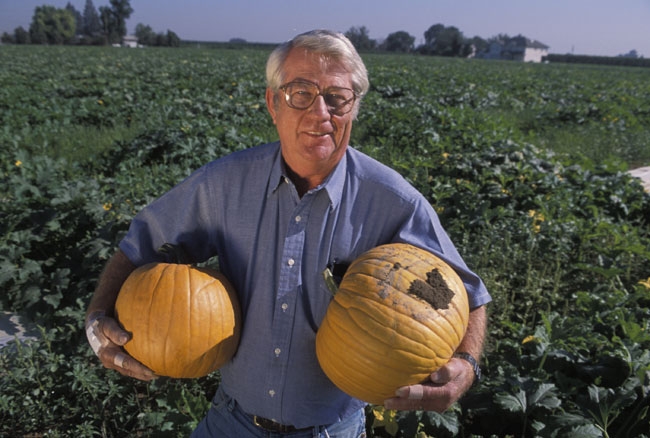
“I started and just kept going,” said Charlie Summers, a research entomologist who was first affiliated with UC Berkeley and later affiliated with UC Davis. Summers ends a 42-year stretch at Kearney when he retires June 30.
Summers grew up on a family farm in Utah and always knew he wanted a career in agriculture. He said he decided at age 12 to go to college, “when I was at the wrong end of a short-handled hoe.”
Summers earned bachelor’s and master’s degrees in zoology and entomology respectively at Utah State University in Logan, Utah, and a doctorate degree in entomology at Cornell in 1970, the same year he started at Kearney.
“The job at Kearney was an absolutely perfect fit for me,” Summers said. “It was a dream job. I look forward to coming to work every morning and would sometimes shake my fist at the sun going down at night. I’ve loved every minute I’ve been here.”
Summers studied a wide range of pest problems in field and vegetable crops. He developed economic thresholds for more than a dozen pests and management strategies for equally as many crops. Among the most challenging pests was the alfalfa weevil, he said. It has been particularly unresponsive to biological control and host plant resistance.
“It is one of the insects that has defied everything we’ve thrown at it except pesticides,” Summers said.
Silverleaf whitefly also posed a tremendous challenge during his career. Silverleaf whitefly was first found in the United States in Florida poinsettia crops during the mid-1980s. Eventually it made its way to a wide range of crops in California, resulting in severe economic losses to growers. Heavy applications of traditional chemicals needed to control the pest caused growers’ costs to increase. The production of some crops ceased altogether because of the extent of silverleaf whitefly damage.
In time, Summers and his colleagues developed a protocol for monitoring and managing the silverleaf whitefly. Light populations are controlled by native and introduced parasites and predators. More severe infestations must still be treated with pesticides.
Another major challenge was the corn leafhopper. The pest first made its way to California in the early 1940s, but didn’t become a serious problem until the end of the 1990s, when it was found to transmit corn stunt disease.
“Corn stunt disease caused plants to form few or no ears of corn. Some farmers’ yields were cut in half,” Summers said. “We worked out a strategy for scheduling planting to avoid the most serious damage. That’s worked out well for growers.”
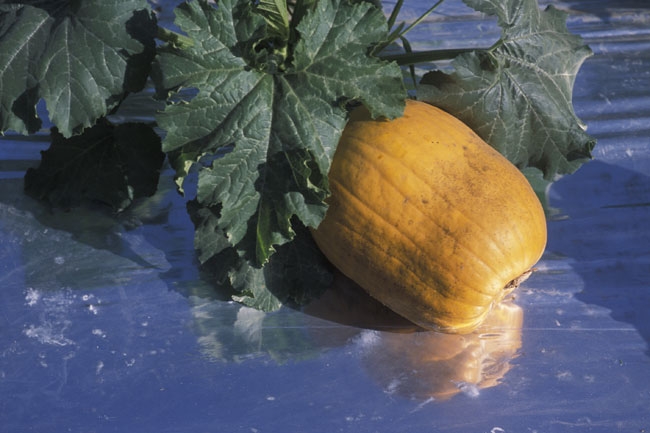
Crops grown on silver mulch produced significantly higher yields of marketable fruit than did those grown on bare soil, the researchers concluded. Reflective mulch has been used by organic and conventional farmers up and down the valley and in Southern California to grow vegetables. Home gardeners have also applied these research results to garden beds by using aluminum foil as mulch.
Although Summers did not technically have an extension component to his position – he was among the last scientists hired to devote 100 percent of their time to research – Summers made it a point to work closely with farm advisors and specialists to convey research results to farmers.
“Extension work has been one of the most enjoyable things I’ve done,” he said. “I’ve worked with farm advisors on research projects, farm calls and given hundreds and hundreds of extension talks at their grower meetings.”
Summers has also authored more than 200 articles, book chapters and research papers, most of them peer reviewed.
Over the years, Summers said, the objective of his job – to help farmers develop successful pest management strategies – stayed the same, but technological advances dramatically changed the way he did his work.
“We’ve had the advent of computer technology, the use of mathematical models, work that can now be done at the DNA level. It’s put a whole new face on our ability to do research,” he said.
Nevertheless, he said, nothing can replace what he considers the essence of the experiment station model: to personally assist growers.
“To me that’s the most important job we performed,” Summers said. “I hope this work continues.”
In retirement, Summers plans to move back to Utah to live near his sister and nephews and spend time pursuing his favorite pastime, fly fishing.
“I’ll be living 15 minutes from the Wasatch Mountains,” Summers said. “There’s a lot of good fishing there.”


